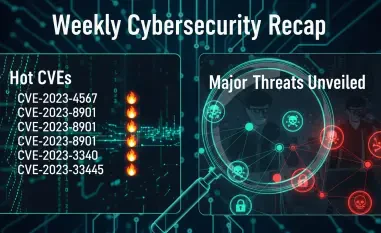In the ever-evolving landscape of cybersecurity, staying ahead of emerging threats is a constant challenge. Today, we’re thrilled to sit down with Malik Haidar, a seasoned expert with a wealth of experience in combating cyber threats within multinational corporations. With a deep background in analytics, intelligence, and security, Malik has a unique perspective on integrating business strategies into cybersecurity defenses. In this interview, we dive into the alarming rise of new malware like ChaosBot, a Rust-based backdoor, and the evolving Chaos-C++ ransomware variant. We explore how these threats operate, the innovative tactics used by cybercriminals, and the broader implications for organizations striving to protect their digital assets.
How did you first come across ChaosBot, and what makes it stand out as a significant threat in the cybersecurity landscape?
I first encountered ChaosBot through reports of its detection in late September 2025 within a financial services environment. What makes it particularly concerning is its use of Rust as a programming language, which is less common for malware. Rust offers benefits like memory safety and performance, making ChaosBot more efficient and harder for traditional security tools to detect. It’s a backdoor that allows attackers to conduct reconnaissance and execute commands, posing a severe risk to compromised systems by enabling persistent access and control.
What can you tell us about the environments or industries that ChaosBot tends to target?
ChaosBot has been observed targeting industries like financial services, which are often high-value targets due to the sensitive data they handle. These organizations typically have complex networks, and in this case, attackers exploited compromised credentials tied to over-privileged accounts and VPN access. This allowed them to move laterally within the network, deploying ChaosBot across multiple systems using remote command execution tools like WMI.
How do threat actors typically deploy ChaosBot onto victims’ systems?
The deployment of ChaosBot often starts with phishing messages containing malicious Windows shortcut files, or LNK files. When a user opens the file, it triggers a PowerShell command to download and run the malware while displaying a decoy PDF to distract the victim. Additionally, attackers use compromised credentials, such as those mapped to privileged accounts, to gain initial access and then leverage tools like WMI to spread the malware across a network.
Can you explain how ChaosBot abuses platforms like Discord for its operations?
ChaosBot uniquely uses Discord as a command-and-control channel. The malware connects to specific Discord channels created by the threat actor, often named after the victim’s computer, to receive instructions. Profiles linked to this activity include handles like “chaos_00019” and “lovebb0024,” which are used to issue remote commands to infected devices. This method is particularly sneaky because it blends malicious traffic with legitimate platform usage, making it harder to detect.
What are some of the most dangerous commands that ChaosBot can execute once it infects a device?
ChaosBot supports a range of destructive commands. For instance, the “shell” command lets attackers run PowerShell scripts to manipulate the system, while the “upload” command can exfiltrate sensitive files by sending them to a Discord channel. Other commands like “scr” capture screenshots, and “download” allows attackers to push additional malicious files onto the device. Each of these capabilities heightens the risk of data theft and further compromise.
What evasion techniques does ChaosBot employ to avoid detection by security tools?
ChaosBot uses sophisticated evasion tactics. It bypasses Event Tracing for Windows, or ETW, by patching specific instructions to prevent logging of its activities. Additionally, it checks for virtual machine environments by comparing system MAC addresses against known prefixes for platforms like VMware and VirtualBox. If it detects it’s running in such an environment, often used by researchers for analysis, it simply exits to avoid scrutiny.
How does ChaosBot maintain persistence in a compromised network?
To stay entrenched, ChaosBot uses a malicious DLL named “msedge_elf.dll,” which is sideloaded via a legitimate Microsoft Edge binary called “identity_helper.exe.” After initial infection, it performs system reconnaissance and downloads a fast reverse proxy tool to create a backdoor into the network. This setup ensures attackers can maintain access over time, even attempting to configure additional backdoors like Visual Studio Code Tunnel services for command execution.
Shifting gears to another threat, can you describe what Chaos-C++ ransomware is and how it has evolved from earlier versions?
Chaos-C++ is a new variant of the Chaos ransomware, rewritten in C++ to be more aggressive. Unlike earlier versions, it doesn’t just encrypt files—it also deletes large files over 1.3 GB outright, making recovery impossible in many cases. Additionally, it introduces clipboard hijacking to swap Bitcoin addresses with attacker-controlled wallets, aiming to steal cryptocurrency transactions. This dual approach of destruction and financial fraud marks a significant evolution, turning it into a multifaceted threat.
What tactics do attackers use to trick users into installing Chaos-C++ ransomware?
Attackers often disguise Chaos-C++ as legitimate utilities, like a fake “System Optimizer v2.1.” Previous iterations have posed as popular tools like ChatGPT or InVideo AI. These deceptive downloaders ensure successful execution by leveraging user trust. Once installed, the ransomware checks for prior execution markers and, if none exist, proceeds with encryption or deletion processes while also monitoring the clipboard for financial theft opportunities.
What is your forecast for the future of malware like ChaosBot and Chaos-C++ in terms of their impact on cybersecurity?
I believe we’ll see an increase in malware leveraging unconventional languages like Rust for better evasion and performance, as seen with ChaosBot. Similarly, ransomware like Chaos-C++ will likely continue to blend destructive tactics with financial fraud, targeting both data integrity and direct monetary gain. The use of legitimate platforms like Discord for command-and-control will also grow, challenging traditional detection methods. Organizations must invest in advanced behavioral analysis and employee training to stay ahead of these evolving threats.













